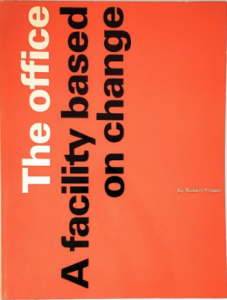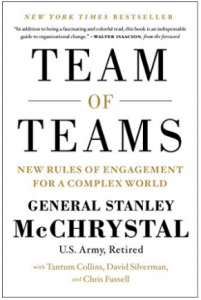This Content Is Only For Paid Subscribers
Welcome to our new docuseries exploring what is happening to the office through the lens of trusted and emerging thinkers.
Author and futurist, Rex Miller, explores how the pandemic disrupted the contract between employees and employers, causing people to reassess what they want from their work lives. Check out this conversation with Rex as he explains why and how companies need to help employees reacclimate and recondition themselves to these changes. How can we rethink organizational structures and workplace design to break free from tradition and move forward?
Video Transcript
The Reaction (1:01)
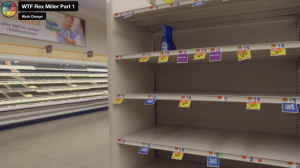 Rex Miller: It didn’t hit me until I walked into the H-E-B grocery store and found all the dairy products gone, all the paper products gone and I thought, wow, this feels like what you’d see if you had a hurricane. So I called up Dr. Jernigan in California, who was a colleague and collaborated on the education book we did on mental health and trauma and stress.
Rex Miller: It didn’t hit me until I walked into the H-E-B grocery store and found all the dairy products gone, all the paper products gone and I thought, wow, this feels like what you’d see if you had a hurricane. So I called up Dr. Jernigan in California, who was a colleague and collaborated on the education book we did on mental health and trauma and stress.
And just ask, what do you think is going on here? And that’s when he laid out for me the framework of what societies go through or communities go through when they’re hit by a mass disaster. And these are several levels of disruption. You know, there’s that anticipation at the very beginning. Then you get hit, everything’s disrupted. You get some balance back, and then you begin digging out, wondering what the future’s going to look like.
Right now it feels like most of our responses are pretty reactive. We’re looking at how do we bring people back in a very transactional way, and we’re caught. Organizations are caught either cracking down like the East Coast financial firms or caving in like the West Coast firms to employee demands without really understanding some of the deeper layers of what’s been going on in this crisis.
When you look at what the pandemic disrupted, first of all, it broke the contract that employees have with their employer. That you will protect me, take care of me. The trust was fundamentally broken. The second thing that I think happened is the treadmill stopped, was all geared in routine. When it stopped, I started realizing all the things I was missing out on dinner, at home, talking to my kids, kids coming over, flexibility in my daily schedule.
And so once we stopped the treadmill, we started assessing, and a lot of people said, I don’t want to go back to the commute, I don’t want to go back to doing meaningless work. Then we establish new life rhythms. They talk about habits being built in 21 to 72 days. Well, we’ve had two years to get into the rhythm and the routine, and you don’t just flip a switch. I think companies have to look at, there’s a new mountain to climb. How do we help employees reacclimate, recondition and go through that?
Fundamental Change (3:44)
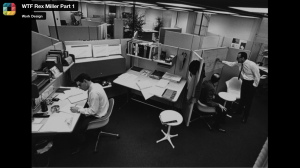 Well, the big mistake has been that we’ve been waiting. We’ve played the wrong game. You know, instead of making the decision, what if this is the new normal and begin experimenting, scenario planning.
Well, the big mistake has been that we’ve been waiting. We’ve played the wrong game. You know, instead of making the decision, what if this is the new normal and begin experimenting, scenario planning.
We’re just caught flatfooted on this. We can go back. There’s precedent in the sixties. There was a book written by Robert Propst with Herman Miller on A Facility Based On Change. He was fundamentally redefining the nature of work. And the new nature of work, moving from a production line kind of mindset, bullpens in the workplace, private offices, that information was the new reality and the nature of information was it changes and it has a short shelf life.
So the environment needs to be based on change, to be designed around the flow of information. We haven’t done that fundamental work in redefining since that time, we’ve gone from information work to networked digital work and now social mobile work in 2007 with the iPhone, and we haven’t caught up in rethinking the principles underneath the nature of that work and the organizational structures that leverage that work and the facilities that facilitate that work. We’re still trying to do new versions of the old thing over and over again. That’s the fundamental work, which means new metaphors, new vocabulary, you know, a facility based on change was a fundamental new way of thinking about the workplace.
The Constraints (5:30)
 Deming is quoted as saying “the system is perfectly designed to create the results that it gets”. So when we look at the financial models that developers have, building buildings that you can compare, you know, have comps, all those things drive the system. Just the way we saw the system in construction, we’re constrained in the system that by design builds distrust and fragmentation. That’s the same uphill battle that companies face today. They want to do something different, but they’re constrained within the small area. Think of a classroom, for example. It’s a good metaphor. It’s a 900 square foot box. We’ve been talking about reinventing learning forever. When you think of a classroom, what’s the first thing you think of in terms of how it looks?
Deming is quoted as saying “the system is perfectly designed to create the results that it gets”. So when we look at the financial models that developers have, building buildings that you can compare, you know, have comps, all those things drive the system. Just the way we saw the system in construction, we’re constrained in the system that by design builds distrust and fragmentation. That’s the same uphill battle that companies face today. They want to do something different, but they’re constrained within the small area. Think of a classroom, for example. It’s a good metaphor. It’s a 900 square foot box. We’ve been talking about reinventing learning forever. When you think of a classroom, what’s the first thing you think of in terms of how it looks?
So, until we get out of these mental models, a classroom, you know, I’ve seen some outlier schools like Canyon View in Arizona. There’s no walls. They’ve got drapery and things, so it can be a small classroom or it can be an expanded classroom, and it’s open air. So until we start using different vocabulary, different metaphors, have a new narrative like Robert Props did, we’re still going to be stuck with doing variations on the same theme.
Organizational Design (6:57)
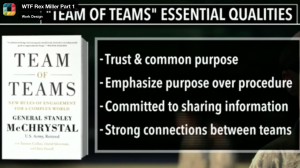 One of the tools we use is we look at possible futures and we create scenarios. Remember the book Team of Teams? Oh, one of the things Stanley McChrystal did is take all this realtime information into a command center and make it available to everybody, and then people could organize around mission intent, having full information and make real time decisions.
One of the tools we use is we look at possible futures and we create scenarios. Remember the book Team of Teams? Oh, one of the things Stanley McChrystal did is take all this realtime information into a command center and make it available to everybody, and then people could organize around mission intent, having full information and make real time decisions.
We’re still operating in a command and control structure. We’re still operating in departmental silos. We’re still working in that work is linear. It gets passed on from person to person to person. What has changed in the nature of work? What facilitates that today? And then how do we rethink the story and the narrative of what we’re coming to? Until we start thinking about designing organizationally around how communication flows, how commitments are made, how we form teams, we can’t redesign a facility until we redesign the organization. And so we’ve got this kind of the tail wagging the dog syndrome where we’re putting a lot of time and effort on trying to guess what environment people will like and want to come into, and we keep getting it wrong. Remember when we did the CBRE, we looked at that headquarters project, and so one, they went to activity workplace design, but their process of making the decision, they had eight areas they wanted to explore.
CBRE was coming off. They lost 90% of their stock value during the dot-com crash. I mean, during the real estate crash. Coming out, Lewis Horne said what made us successful in the past isn’t gonna make us successful. We operate in silos. We need to take the walls, let industrial and retail and commercial and institutional collaborate, let legal and accounting get involved in the value proposition we make, which requires team, but, the big lift was the majority of offices for brokers were private offices. And so they had this cultural change dilemma. And what Lewis did is he broke the office into eight different study groups on technology, on amenities, on health and wellbeing, furniture, all these different areas. 25% of the office was involved in something and then they debriefed on Fridays. What did we learn? What can we test? And it continued to do that and iterate. So that went from the role of your role as the architect from being the expert coming in. Ta-da. Let’s look at this to a guide in the process, making sure that there’s full engagement.
So it changed the process, contextualized it to that group, and it was a home run. You know, I remember going out there being very skeptical that I was just gonna see a nice building, a nice space. And we’ve all seen nice spaces, but the miracle and the magic was it transformed the culture. They brought 40% more people were coming in than prior. They had reduced their square footage and their cost $900,000 a year.
So happiness is up, work productivity is way up, costs are down because it was the collective and it was a new process. It wasn’t, you know, everybody, most companies assign the decisions to third parties, right? Architects and brokers. You tell us what we need, give us, we’ll pick amongst the menu so there’s no discovery going through it. And when you look at what it could be, design is really asking how do we live and work better together?
There’s an organizational model called the STAR Model, and it begins with every organization starts with their, where are we going? You know, what’s the future? How do we interpret the future? We need a way to make sure that things flow in a logical way. We need the tools for that instead of now we have this siloed, you know, we know what marketing does, so we hand it off. So we’ve got this waterfall approach to work, which is too slow and it strips out a lot of context that you need to make good decisions.
Strength Of Culture (11:40)
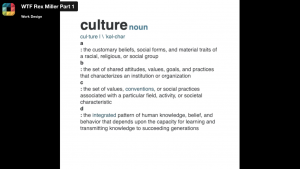 Whatever culture you thought you had before the pandemic is gone, you don’t have it. By definition, culture are the invisible attitudes, habits, values, and behavior that run the place when you’re not there. That’s gone. We don’t have that anymore.
Whatever culture you thought you had before the pandemic is gone, you don’t have it. By definition, culture are the invisible attitudes, habits, values, and behavior that run the place when you’re not there. That’s gone. We don’t have that anymore.
Now we need to rethink, you know, not give up our values necessarily, but we need to now pressure-test for these kinds of future worlds that we were in. That’s what we need to do fundamentally, every organization. And not in a vacuum, not with leadership going off on a retreat, making stuff up, coming back and saying, okay, we’ve got new posters with new images of our values and new T-shirts and new mugs.
Social Modeling (12:31)
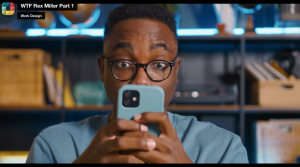 Well, this whole idea that we’re not constrained by place, and we have these distributed capabilities that we’re not using. So the organizations that best adapt to those. So when we had the dot-com growth, we saw Netflix, we saw Facebook, we saw Pandora, we saw Uber. Find one piece of that magic, the algorithm magic, and build a whole business model and completely disrupt the landscape.
Well, this whole idea that we’re not constrained by place, and we have these distributed capabilities that we’re not using. So the organizations that best adapt to those. So when we had the dot-com growth, we saw Netflix, we saw Facebook, we saw Pandora, we saw Uber. Find one piece of that magic, the algorithm magic, and build a whole business model and completely disrupt the landscape.
There’s a whole discipline and tools of looking at these possible or probable futures and companies need to do that, or they’re gonna be the next Kodak, the next blockbuster. They’ll get left behind because they haven’t fully embraced, not just the technology, but socialized it so it’s innate. They’re not just digital immigrants doing BIM, but the first thing they come up with is we think modeling. Modeling is who we are in our DNA, and the organization is built around social modeling. You know, how do we bring all our partners in and model in this collective environment? We’re still not doing it even though we’ve had the capacity to do it for over 20 years.
What if you designed a company as if it were an iPhone? If that was a platform, what would it look like? What would a day in the life look like? I mean, that’s a perfect futurist exercise to, you know, drive thinking, then prototype, find outliers that are doing it, that you can learn and bring in and then contextualize it within your organization.
What’s Different? (14:20)
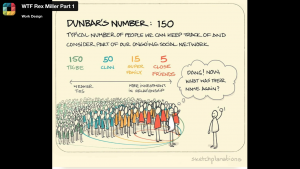 There are outliers like W. L. Gore that has been around since the 1950s. It’s in Delaware. It’s about 10,000 employees, but they operate on a completely different philosophy. And the philosophy is the cohesion of the business unit and to create that cohesion, they use something called Dunbar’s Number. Robert Dunbar is a sociologist that found that about 150 people in your network is all you can keep up with to know on a first name basis and feel close to.
There are outliers like W. L. Gore that has been around since the 1950s. It’s in Delaware. It’s about 10,000 employees, but they operate on a completely different philosophy. And the philosophy is the cohesion of the business unit and to create that cohesion, they use something called Dunbar’s Number. Robert Dunbar is a sociologist that found that about 150 people in your network is all you can keep up with to know on a first name basis and feel close to.
So their facilities, built around Dunbar’s number, max-outed about 200 employees. So think of it, 10,000 employees divided up between lots of facilities, scattered all around each one separate business unit, and they thrive. So I think one of the things we’re needing to rethink is how do we give distributed decision making and capabilities to people? How do we facilitate that? So we’ve got to find out what is different. You know, we need new vocabulary that really captures what we’re going through and experiencing.
A Holistic Ecosystem (15:39)
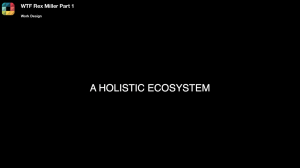 And it’s not just physical space too, it’s what we can do in the space. The office can be more than just a place to do work. It can be a learning facility, you know, it can be a classroom, it can be a performance facility like sports. You know, you, you get better at your skill. It can be a recovery zone. It can be social services capability. That’s what they’re doing in some schools.
And it’s not just physical space too, it’s what we can do in the space. The office can be more than just a place to do work. It can be a learning facility, you know, it can be a classroom, it can be a performance facility like sports. You know, you, you get better at your skill. It can be a recovery zone. It can be social services capability. That’s what they’re doing in some schools.
We need to think in terms of a holistic ecosystem of what an environment, what a workplace is, what we do, and how we become better people. So at the end of the day, we feel like we’ve done good work and we go home happier and healthier and looking forward to coming back the next day.
That’s the mission.
3 Things To Do Right Now:
- Prioritize getting a good night of sleep
- Cultivate five close relationships that are with you through thick and thin
- Know what you can control and what you can’t control, and focus on what you can
Mentioned Reading:
Resources:
- Rex Miller’s Website
- The River Rose Experience
- The Resilience Lab Podcast
- Publications by Rex Miller
Meet Rex Miller:
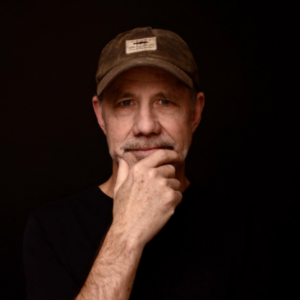
Rex Miller is a renowned expert in optimizing human and team performance, strategic foresight, and organizational transformation. With over 20 years as a consultant and coach, he has authored six Wiley books and received numerous accolades, including the CoreNet Global Innovator Award, the Industry Excellence Award, and IFMA’s Distinguished Author Award.
Rex is celebrated for his mastery in guiding large capital project teams to work together efficiently and progressing swiftly along the learning curve. He excels at helping teams overcome the infamous Forming-Storming hump.
Rex has written numerous books including The Commercial Real Estate Revolution: Nine Transforming Keys to Lowering Cost, Cutting Waste and Driving Change in a Broken Industry; Change Your Space, Change Your Culture, The Healthy Workplace Nudge and WHOLE. He has won the CoreNet Global InnovatorAward, Industry Excellence Award and IFMA’s Award for Excellence.
Episode 1 Part 1 Credits:
- Created By Bob Fox
- Produced By Work Design Magazine
- Directed By Bob Fox
- Edited By Katie Sargent & Bob Fox
- Special Thanks to Amanda Gram & Malena Boylan

